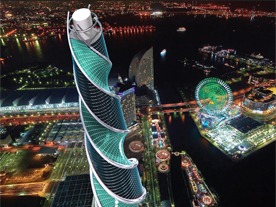The latest version of the popular 3D modeling kernel adds enhancements to multi-core processing, modeling, blending, data import and repair.

The PLM Components division of Siemens PLM Software has released Parasolid software Version 23.0 (V23), an update of its popular 3D geometric modeling component. The kernel is at the heart of Siemens CAD products NX and Solid Edge, and is also used by a variety of CAD and other technical graphics programs, including Bentley MicroStation, Nemetschek Vectorworks, and Dassault Systemes SolidWorks.
The leading competitor to Parasolids is ACIS, from the Spatial Technology division of Dassault Systemes. Spatial is also a distributor of CGM (Convergence Geometric Modeler), the 3D kernel at the heart of CATIA.
The Parasolid update will find its way into new versions of client software products over the next few months, as developers incorporate the update into their products.
Leading features of the update include new support for multi-core processing, face deformation, blending, and data import/repair.
Making Parasolid Thread-Safe
Parasolid now allows applications to take full advantage of multi-core processors. The new release is fully thread-safe, which means enabled applications may have several threads running on different processors, with each calling any Parasolid function simultaneously. This ability is provided by optimized thread, session, and memory management as well as error reporting capabilities new to Parasolid V23. Application developers using V23 are freed from the need to coordinate the multi-thread function calls.
Face Deformation
A new face deformation operation enables highly sophisticated shape changes to digital models based on either design requirements or simulations of shape changes that occur due to real-world situations such as deflection under load or distortion during temperature cycles. Any set of faces in a model can be selected for deformation as defined by a mathematical function provided by the application. This new capability is particularly powerful because the deformation preserves and adjusts existing features, such as offsets and blends, and the deformation may also be applied simultaneously with other model edits.
Blending
In response to the needs of product designers who need to create and modify complex geometry with maximum productivity and flexibility, Parasolid V23 introduces more sophisticated blending techniques and controls that extend the software’s existing range of blending capabilities into the domain of complex modeling.
New options are now available to provide more refined control over the shape of chord width blends – blends that create a uniform, aesthetically pleasing shape and are particularly useful when working with high-quality curved surfaces. Variable chord width face blends provide new methods of defining the chord width and ratio of face blends as being constant or variable according to application-provided functions. Chord width face blends, both constant and variable, are also enhanced with the ability to now have disc cross sections in addition to existing rolling ball cross sections.
Edge Blends can now be defined to be trimmed (i.e. terminated) at a specific edge or face, providing more immediate, localized and robust control of complex blend interactions.
Data import and repair
Parasolid is often required to work with imported data from other systems that require various levels of geometry and topology repair. Parasolid V23 includes several new functions to enhance data import and repair.
A new function enables Parasolid to analyze the topological structure of a model and repair ambiguities, thereby producing data that often meets the rigorous requirements of a fully consistent boundary-representation (b-rep) model, while maintaining the intent of the original data. For example, Parasolid can now detect and repair topological clashes between shells where two faces from different shells share a common edge, greatly reducing model repair time.
Parasolid can now automatically detect and repair surfaces that are ill-defined and unstable because they contain “degeneracies” which may have gone unnoticed before import.
A new option to the model checking function in Parasolid improves the productivity in working with imported data by automatically requesting more detailed reporting including new fault codes
Neutral Sheet Modeling
Parasolid V23 includes further enhancements to the rapid development of neutral sheet modeling technology, targeted at the computer-aided engineering analysis (CAE) market. Siemens PLM says performing these operations at the kernel modeler level has significant advantages of performance, model consistency and functional robustness over implementing them at the application level. New Parasolid functions are provided for detecting and optionally repairing overlapping neutral faces – even those that may occur in apparently simple configurations. Siemens PLM says this repair work now happens in a fraction of the time it would take to perform the task manually. Neutral sheet faces may now also be shared between more than one pair of model faces for improved performance and reduced model size.
Sweeping
New controls have been added to the sweeping operation, and restrictions have been removed to make it quicker and easier to achieve the desired shape in a single operation. A sweep can now be locked to face normals where the sweep path lies on a set of faces. Continuity restrictions on sweep paths have been lifted to allow visibly smooth paths where guides, multiple profiles, scale, or twist laws are also supplied. Sweeps can now also be performed between multiple profiles, each having multiple loops to create disjoint bodies.





